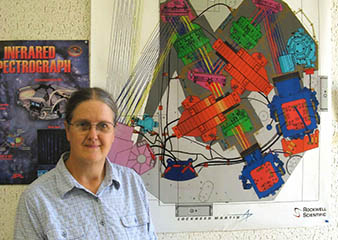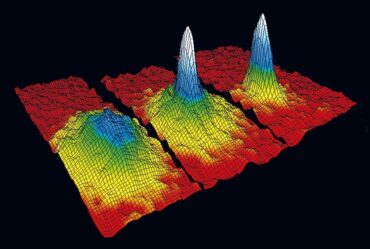
Alum’s Webb Telescope Work Reveals Earliest Moments of Universe
Astronomer Marcia Jean Rieke ’72, PhD ’76 was just 13 when she first decided she’d like to build her own telescope. Grinding a telescope mirror is messy work, however, and her mother said, “Not in this house!”
Fortunately, a store-bought telescope got the green light, and Rieke began an exploration of the universe that continues to this day. This December 25, Rieke will celebrate the one-year anniversary of the launch of an extraordinary telescope she did get to build: the James Webb Space Telescope.
A professor of astronomy at the University of Arizona, Rieke is the principal investigator for one of Webb’s four key components, the near-infrared camera (NIRCam). Over the past year, this camera has enabled the Webb to capture images that reveal some of the earliest moments of the universe.

To explain how Webb provides this window into the past, Rieke points out that even though light moves at 186 thousand miles per second, many objects in the universe are so far away that it can take billions of years for light emitted by those objects to reach human detectors such as the Webb telescope. “So, we’re seeing that object as it was billions of years ago,” she says. “By sampling galaxies at different distances, we see them at varying ages after they formed. It’s a way to parse out the history of the universe.”
Webb is just beginning its mission of discovery, but the telescope has already succeeded in taking its first direct image of a planet outside our solar system. It has also revealed the features of a protostar forming (top image) amid the blazing clouds of the Taurus region. Rieke expects much more in the years to come. “We’re just starting to scratch the surface of the data,” she says.
Preparing to Launch
A native of Michigan, Rieke came of age during the early days of human spaceflight. She planned to study aeronautical engineering at MIT, then took a first-year seminar in cosmology with renowned physics professor Philip Morrison and was immediately hooked. “I had been interested in astronomy for some time,” she says. “It didn’t take too much to push me over the edge to become an astronomer instead of an astronaut.”
Rieke earned both her bachelor’s and doctoral degrees in physics at MIT, then took a postdoctoral position at the University of Arizona focused on infrared astronomy. This method of observing celestial objects centers on detecting infrared wavelengths of light and is particularly useful in discerning objects that might otherwise be obscured by dust—such as stars forming in nebulae.
As Rieke points out, it’s easier to see stars and planets from outside Earth’s atmosphere, but it’s difficult to get the chance to observe the universe from space. That’s why, early in her career, Rieke spent many years using ground-based telescopes. “You worked all night, froze to death sometimes, and learned a lot,” she says.
Those early lessons helped Rieke when she finally got the chance to design telescopes for space. Before taking the lead on NIRCam, she worked on the Hubble Space Telescope, which launched in 1990, and on the Spitzer Space Telescope, which launched in 2003.
We are well on the road to discover the most distant galaxies, just as we promised.
Marcia Jean Rieke ’72, PhD ’76
For NIRCam, Rieke says the primary design challenge was to keep the device in strict optical alignment through the rigors of rocket launch and in the harsh conditions of space. “What is tricky about an instrument like NIRCam is that it operates at minus 388 degrees Fahrenheit, and you build it at room temperature,” she says.
Rieke credits MIT with helping prepare her to face such an extraordinary challenge. “When you get a physics degree from a place like MIT, you may not have taken a course on a thing, but you know how to approach it,” she says. “I never took a class on how to make an infrared detector work looking for a distant galaxy, but I knew how to think through what I needed to do.”
Long-Awaited Success
The December 25, 2021, launch was a long time coming. Designed in the late 2000s, Webb took years to build. Constructing its key feature—a mirror almost 22 feet across made of 18 segments of polished beryllium (a lightweight metal) coated in gold—was particularly time-consuming. However, this mirror is precisely what makes Webb such a powerful telescope. According to NASA, it makes it possible for Webb to see details the size of a US penny at a distance of about 24 miles.
NIRCam was delivered in 2013, and the Webb Telescope was fully constructed by 2016, but a variety of technical and other challenges—including weather—further delayed launch until the end of last year.
When the telescope was finally up and working, however, Rieke was filled with relief and delight. “It was a long road, and now I can be happy that all these young people I persuaded to come work on NIRCam will get their data,” she says. “We are well on the road to discover the most distant galaxies, just as we promised.”


